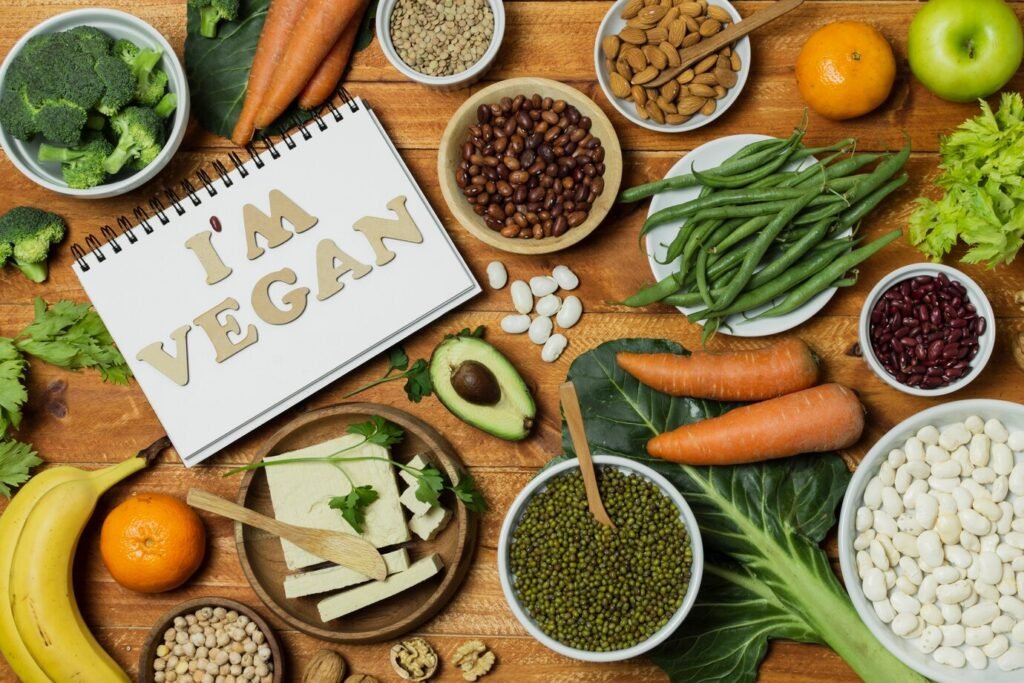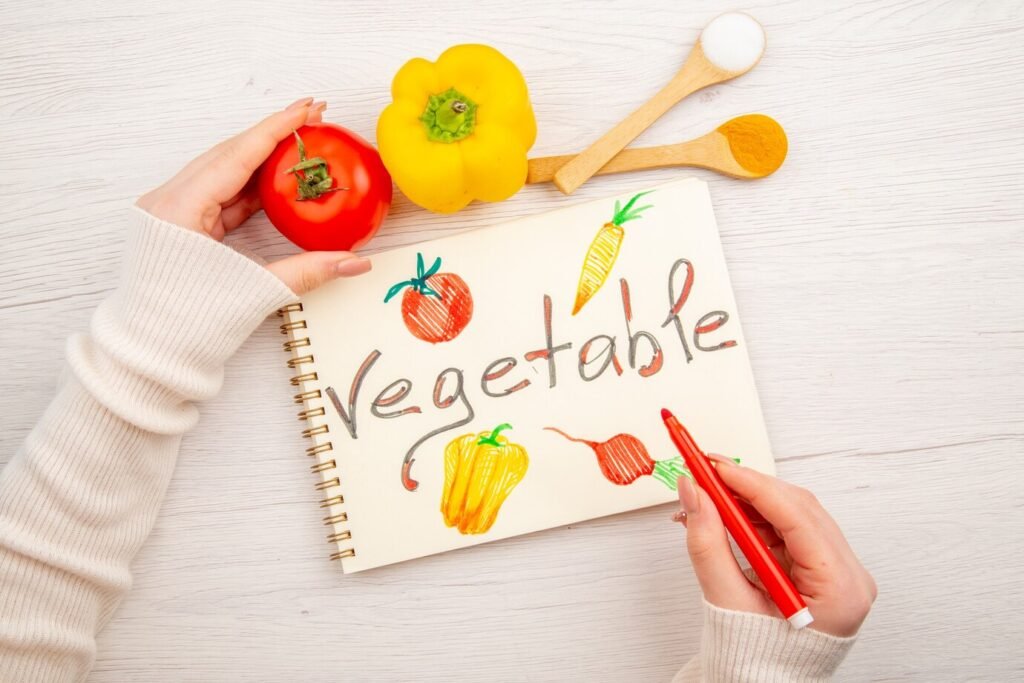In a world increasingly affected by climate change, pollution, and health crises, switching to a sustainable diet is no longer just a trend—it’s a necessity. Ready to take the first step toward mindful eating? Let’s dive in.

1. What Is a Sustainable Diet?
- Healthy and nutritionally adequate
- Environmentally benign (low in greenhouse gases, land use, and biodiversity loss)
- Culturally acceptable, affordable, and accessible.
Why It Matters:
- Environmental impact: Food systems generate ~33% of global greenhouse gas emissions.
- Health benefits: Emphasizing plant-rich, whole-food diets helps prevent chronic diseases
- Societal impact: Supports fair labor, reduces food waste, and preserves biodiversity.
2. Core Principles of a Beginner’s Sustainable Diet
- Prioritize vegetables, fruits, legumes, nuts, seeds, and whole grains
- Strong evidence links plant-based eating with lower greenhouse gas emissions and reduction in chronic illness risk.
A. Limit Animal Products
- Reduce red and processed meats, dairy, and eggs—these have higher environmental footprints.
- Replace some of them with sustainable seafood, poultry, or moderate dairy choices.
B. Choose Whole, Minimally Processed Foods
- Avoid ultra-processed items: sugary drinks, packaged snacks, imitation meats, refined grains.
- Focus on foods your “great‑great grandmother would recognize”.
C. Focus on Variety & Seasonal Foods
- A diverse diet supports nutrient intake and biodiversity.
D. Minimize Waste + Packaging
- Plan meals, store food properly, and compost leftovers.
- Choose loose produce or minimal packaging to minimize plastic waste.
- Skip sugary drinks, opt for tap water to reduce waste and improve health.
3. What to Eat vs. Avoid
✅ Foods to Eat
| Category | Examples | Why Eat |
|---|---|---|
| Vegetables & Fruits | Leafy greens, berries, root veggies | Nutrient-dense, fiber-rich, low-carbon |
| Whole Grains | Brown rice, oats, quinoa, millet | Source of B-vitamins, fiber; low impact |
| Legumes & Pulses | Lentils, chickpeas, beans, peas | High-protein, low water footprint |
| Nuts & Seeds | Almonds, walnuts, flax, chia | Healthy fats & protein; source of omega-3 |
| Plant-Based Dairy | Fortified soy/almond milks | Low in saturated fat, fortified with calcium & B12 |
| Sustainable Seafood | MSC-labeled fish, bivalves | Moderate climate impact, nutritious |
🚫 Foods to Avoid or Limit
- Red and processed meat (beef, lamb, sausages): Highest carbon footprint.
- High-fat dairy and butter: Resource-intensive & saturated fat-heavy.
- Ultra-processed foods: Imitation meats, snacks, sugary drinks—low nutrient, high waste
- Refined grains & sugar: White flour, sweets – nutrient-poor
- Excess packaging: Single-use plastics, aluminum – unnecessary waste.
4. Sample 7‑Day Sustainable Meal Plan
Inspired by plant-based, low‑carbon menus—even a flexitarian—orientated around the “Planetary Health Diet”.
Week-at-a-Glance
- Breakfasts: Oat‑based bowls, smoothies with seeds & fruit, savory tofu oats
- Lunches: Grain and bean‑based Buddha bowls, lentil soups, veggie wraps
- Snacks: Fruit, nuts, hummus + crudités, whole-grain crackers
- Breakfast: Overnight oats with apples, walnuts & cinnamon
- Lunch: Quinoa bowl topped with chickpeas, roasted sweet potato, kale & tahini
- Dinner: Lentil soup with carrots & celery, served with whole‑grain bread
- Snack: Sliced pears + almond butter
- Breakfast: Green smoothie (spinach, banana, flaxseed, soy milk)
- Lunch: Hummus & veggie wrap in whole-wheat tortilla
- Dinner: Baked sustainable salmon with brown rice and steamed broccoli
- Snack: Carrot sticks + hummus
- Breakfast: Savory oats (oats, miso, tofu, mushrooms)
- Lunch: Mixed bean salad (black beans, kidney beans, tomatoes, corn, cilantro)
- Dinner: Chickpea curry over millet. Side of grilled zucchini
- Snack: Handful of mixed nuts
(Continue Days 4–7 with a mix of plant-forward and minimal animal-intake options)
5. Essential Nutrients to Monitor
- Vitamin D: sunshine; supplementation may be needed
- Calcium: leafy greens, fortified non-dairy milks
- Iron: legumes, seeds, fortified cereals; pair with vitamin C to boost absorption.
- Consume flax, chia, walnuts, or algae-based supplements
- Zinc: found in legumes, seeds, nuts
6. Tips for Transitioning
- Start small – Try Meatless Mondays or plant-based lunches
- Build balanced plates – Half veggies, quarter grains, quarter protein + healthy fats
- Plan ahead – Prep plant-based staples ahead of time
- Read labels – Avoid ultra‑processed items
- Buy seasonal/local – Visit farmers’ markets or join a CSA.
- Minimize waste – Cook in bulk, compost, repurpose leftovers
- Check seafood sourcing – Look for MSC or similar certifications
- Watch portion sizes – Helps with waste and health
- Stay informed – Follow current OECD/FAO updates on planetary diets and sustainability targets
7. Benefits of a Sustainable Diet
- 🌍 Climate-friendly: Plant-rich diets emit fewer greenhouse gases.
- 💪 Health gains: Less risk of heart disease, diabetes, and obesity
- 🧠 Mental benefits: Nutrient-rich diets support better mental wellness
- 💸 Cost-effective: Grains, beans, and seasonal produce are budget-friendly
- 🧘 Ethical & social: Supports biodiversity, animal welfare, and fair trade
8. Curveballs to Watch
- Food miles myth: Shipping isn’t the biggest climate culprit—production methods are.
- Almond water use: Almonds can be water-intensive—opt for diversification (walnuts, seeds, legumes)
Conclusion
Adopting a sustainable diet isn’t about drastic changes or perfection—it’s about making mindful, everyday choices that benefit your health and the planet. By prioritizing plant-based foods, reducing your intake of animal products and ultra-processed items, and supporting seasonal, local produce, you take a powerful step toward a more eco-conscious and balanced lifestyle. Begin your journey today, and let your plate be a reflection of a healthier you and a greener world.



